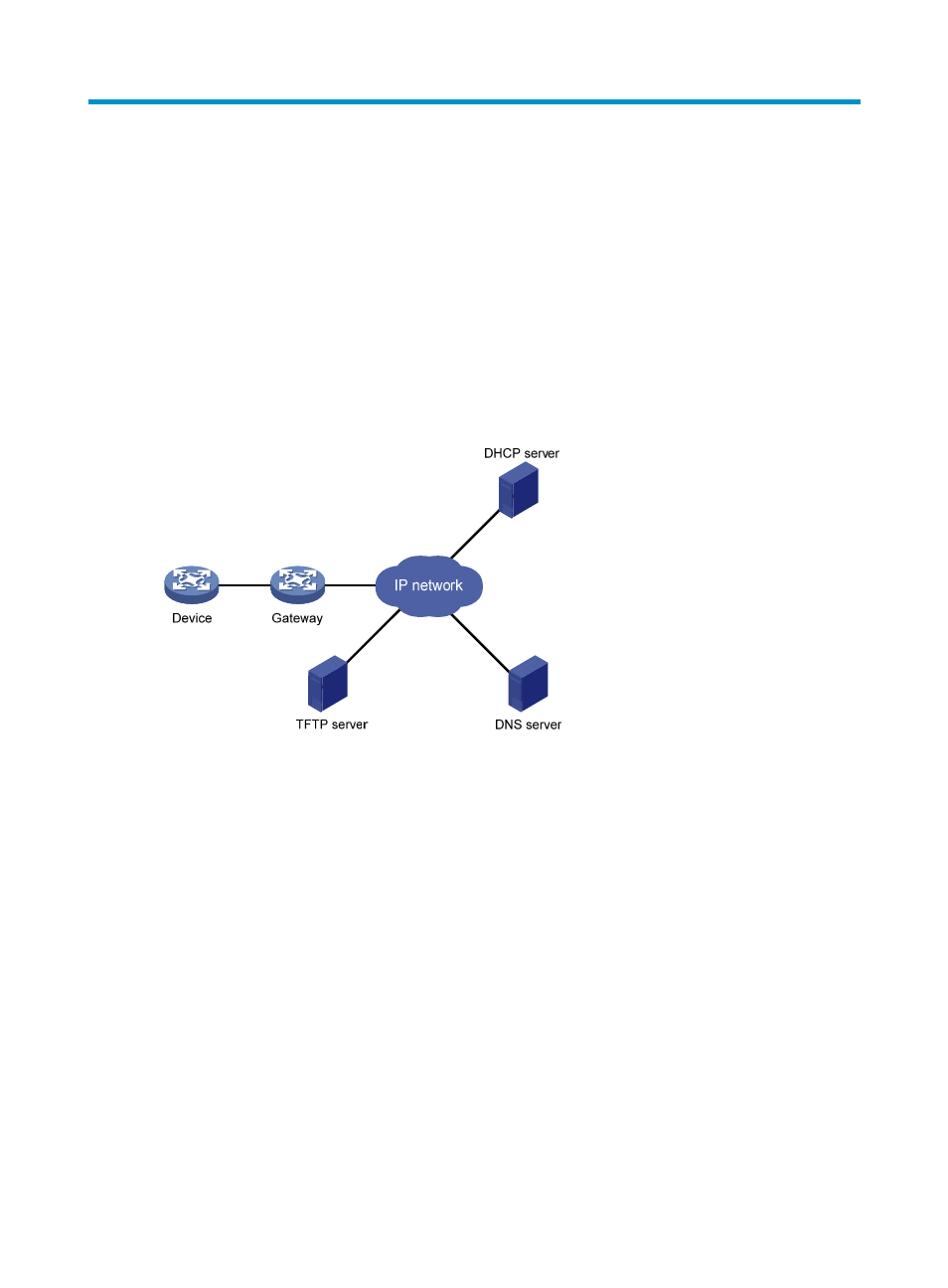Automatic configuration introduction, Typical automatic configuration network – H3C Technologies H3C S12500 Series Switches User Manual
Page 196

184
Automatic configuration introduction
Automatic configuration enables a device without any configuration file to automatically obtain and
execute a configuration file during startup. Automatic configuration simplifies network configuration,
facilitates centralized management, and reduces maintenance workload.
To implement automatic configuration, the network administrator saves configuration files on a server
and a device automatically obtains and executes a specific configuration file.
Typical automatic configuration network
Figure 60 Network diagram
As shown in
, the device implements automatic configuration with the cooperation of the
following servers:
•
DHCP server—Assigns an IP address and other configuration parameters such as the configuration
file name, TFTP server IP address, and DNS server IP address to the device.
•
TFTP server—Saves files needed in automatic configuration. The device gets the files needed from
the TFTP server, such as the host name file that saves mappings between host IP addresses and host
names, and the configuration file.
•
DNS server—Resolves between IP addresses and host names. In some cases, the device resolves its
IP address to the corresponding host name through the DNS server, and then uses the host name to
request the configuration file with the same name (hostname.cfg) from the TFTP server. If the device
gets the domain name of the TFTP server from the DHCP response, the device can also resolve the
domain name of the TFTP server to the IP address of the TFTP server through the DNS server.
If the DHCP server, TFTP server, DNS server, and the device are not in the same network segment, you
must configure the DHCP relay agent on the gateway, and configure routing protocols to enable each
server and the device to reach one another.
- H3C S12500-X Series Switches H3C S9800 Series Switches H3C S9500E Series Switches H3C S5560 Series Switches H3C S5130 Series Switches H3C S5120 Series Switches H3C SR8800 H3C SR6600-X H3C SR6600 H3C MSR 5600 H3C MSR 50 H3C MSR 3600 H3C MSR 30 H3C MSR 2600 H3C MSR 20-2X[40] H3C MSR 20-1X H3C MSR 930 H3C MSR 900 H3C WX3000E Series Wireless Switches H3C WX5500E Series Access Controllers H3C WX3500E Series Access Controllers H3C WX2500E Series Access Controllers H3C WX6000 Series Access Controllers H3C WX5000 Series Access Controllers H3C WX3000 Series Unified Switches H3C LSWM1WCM10 Access Controller Module H3C LSUM3WCMD0 Access Controller Module H3C LSUM1WCME0 Access Controller Module H3C LSWM1WCM20 Access Controller Module H3C LSQM1WCMB0 Access Controller Module H3C LSRM1WCM2A1 Access Controller Module H3C LSBM1WCM2A0 Access Controller Module H3C WA3600 Series Access Points H3C WA2600 Series WLAN Access Points H3C SecPath F5020 H3C SecPath F5040 H3C VMSG VFW1000 H3C S10500 Series Switches
